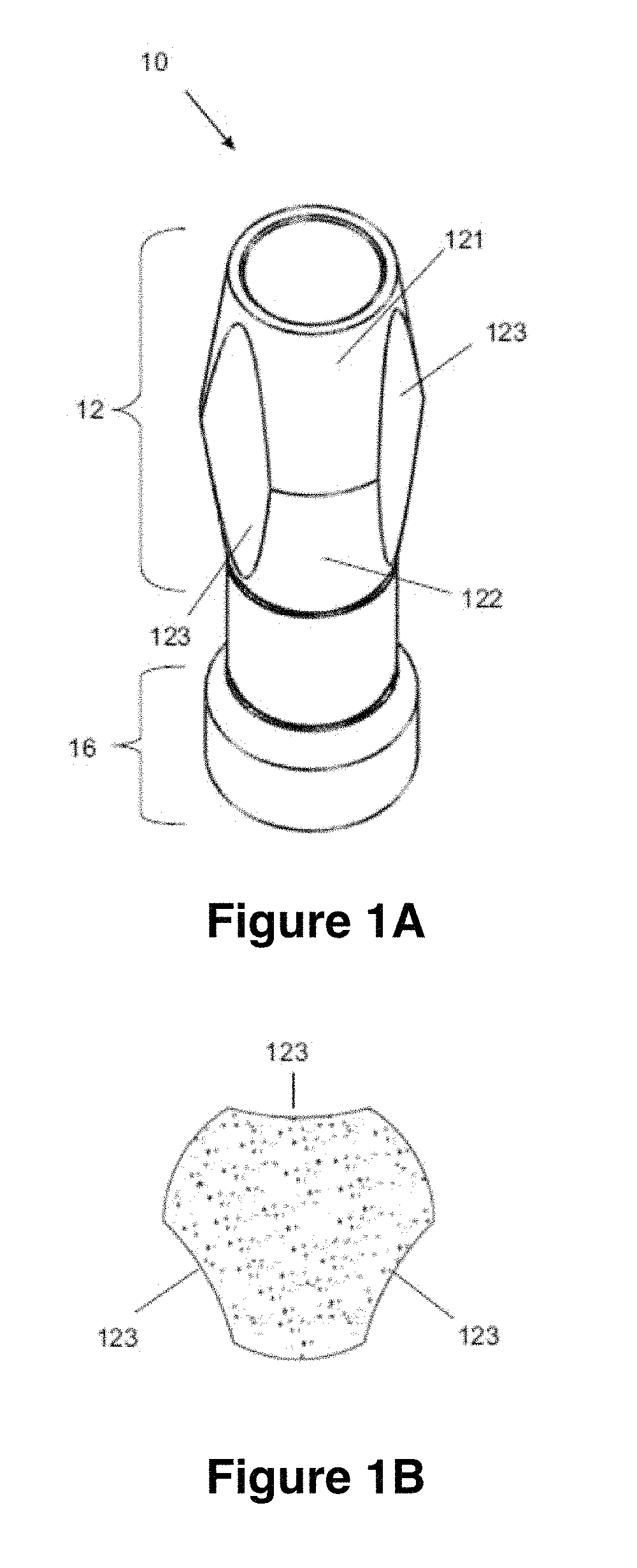Scanbody
a scanning body and scanning technology, applied in the field of dental care, can solve the problems of affecting the quality of scanning, the work of scanning media, and the loss of alignment, so as to improve the accuracy and reliability of scanning models with analogs, minimize, or eliminate, and reduce the formation of artifacts
- Summary
- Abstract
- Description
- Claims
- Application Information
AI Technical Summary
Benefits of technology
Problems solved by technology
Method used
Image
Examples
Embodiment Construction
[0031]The following description is of the best mode presently contemplated for carrying out at least one embodiment of the invention. This description is not to be taken in a limiting sense, but is made merely for the purpose of describing the general principles of the invention. The scope of the invention should be determined with reference to the claims.
[0032]FIGS. 1A and 1B illustrate the main features of the scanbody device and a cross-section view of the scanbody device, according to one or more embodiments of the invention. At least one embodiment includes a scanning device (10) that includes a body (12) and a base (16) interconnected by a middle part to maintain a body and base set height constant when different types of anti-rotation elements are used.
[0033]In one or more embodiments, the base (16), as a lower part of the scanning device (10), may fit on a dental implant anti-rotation geometry, whether located in a fixing installed in a mouth of a user or analog attached to ...
PUM
 Login to View More
Login to View More Abstract
Description
Claims
Application Information
 Login to View More
Login to View More - R&D
- Intellectual Property
- Life Sciences
- Materials
- Tech Scout
- Unparalleled Data Quality
- Higher Quality Content
- 60% Fewer Hallucinations
Browse by: Latest US Patents, China's latest patents, Technical Efficacy Thesaurus, Application Domain, Technology Topic, Popular Technical Reports.
© 2025 PatSnap. All rights reserved.Legal|Privacy policy|Modern Slavery Act Transparency Statement|Sitemap|About US| Contact US: help@patsnap.com



